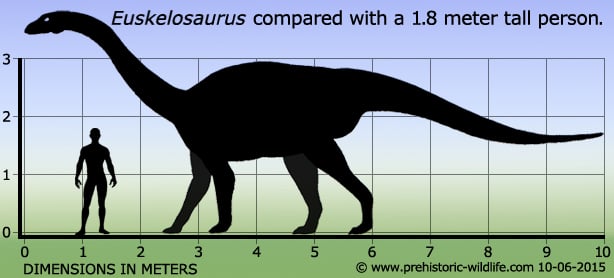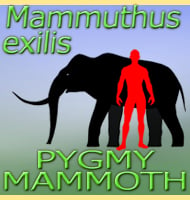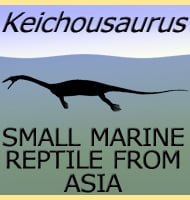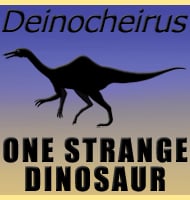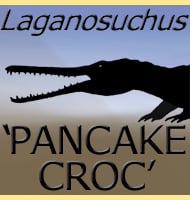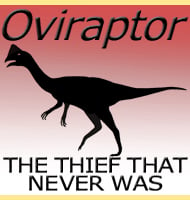In Depth
Euskelosaurus may have been quite specialised for a sauropodomorph dinosaur since the shaft of the femur is physically twisted. This led in 1979 to a palaeontologist by the name of Heerden to suggest that Euskelosaurus might have been bow legged instead of just growing straight down like similar sauropodomorphs. The twisting of the femur may have been a way that Euskelosaurus adapted to cope with its large body, which at ten meters long would have been one of the largest of all the sauropodomorphs (though some species such as Yunnanosaurus youngi grew even bigger). Fossils of Euskelosaurus from Lesotho and South Africa are so far Late Triassic in age (Norian to Rhaetian), while Euskelosaurus fossils from Zimbabwe seem to be from the early Jurassic.
Further Reading
– On some remains of large dinosaurian reptiles from the Stormberg Mountains, South Africa. Quarterly Journal of the Geological Society of London 23(1):1-6. – Thomas Henry Huxley – 1866. - The morphology and taxonomy of Euskelosaurus (Reptilia: Saurischia; Late Triassic) from South Africa. - Navorsinge van die Nasionale Museum, 4(2): 23-84. - Jacques van Heerden - 1979. – Biochronostratigraphy of the Lower Elliot Formation, southern Africa) and preliminary results on the Maphutseng dinosaur. Saurischia: Prosauropoda) from the same Formation of Lesotho, by Francois-Xavier Gauffre. In, The Nonmarine Triassic: Bulletin 3. pp. 147–9. – Spencer G. Lucas & Michael Morales (eds.). – 1993. – The basicranium of a basal prosauropod from the Euskelosaurus range zone and thoughts on the origin of dinosaurs. – Journal of African Earth Sciences. 29 (1): 227–232. – Johann Welman – 1999. – The death of a dinosaur: dismembering Euskelosaurus. Geoscience Africa. p. 715. – A. M. Yates – 2004.
